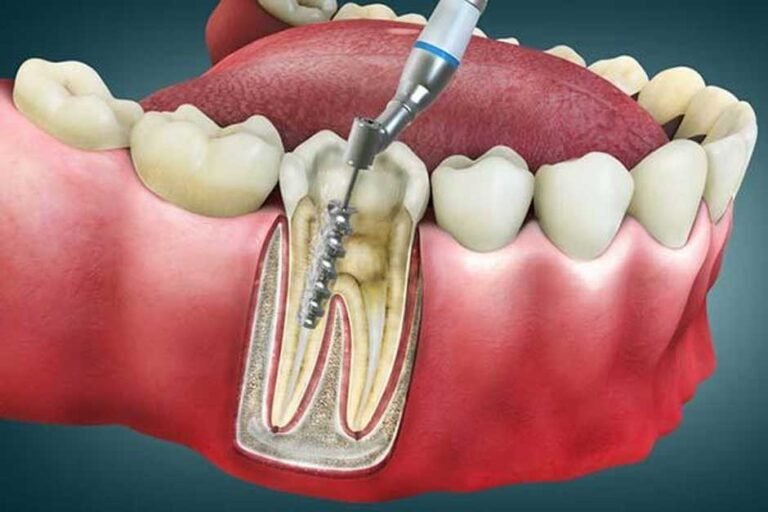If you’ve ever felt a throbbing toothache, noticed swelling in your gums, or dealt with a broken tooth, you’ve likely wondered: Is it bad enough to need a root canal, or do I need a dental implant? For many patients, the line between these two treatments isn’t always clear. But understanding the signs and knowing what your dentist looks for can take a lot of the fear and confusion out of the process.
This article will help you figure out which treatment may be right for your situation and how to move forward with confidence.
Understanding the Basics
Before diving into the specifics, let’s break down the differences between root canals and dental implants.
What Is a Root Canal?
A root canal is a procedure designed to save your natural tooth when the soft tissue inside (called the pulp) becomes infected or inflamed. During treatment, the dentist removes the damaged pulp, cleans the canals inside the tooth, and seals it off with a filling or crown. This process can relieve pain and prevent further infection while keeping the original tooth intact.
What Is a Dental Implant?
A dental implant is a complete tooth replacement. It involves placing a titanium post into the jawbone, which acts like the root of a missing tooth. Once healed, a crown is placed on top to restore appearance and function. Implants are often the best solution when a tooth can’t be saved or is already missing.
When a Root Canal Is the Best Option
Not every painful tooth needs to be pulled. Many cases of decay or infection can be treated successfully with a root canal.
Common Signs You Might Need a Root Canal
- Persistent or throbbing tooth pain
- Extreme sensitivity to hot or cold temperatures
- Gum swelling, tenderness, or a small bump near the tooth (which may indicate an abscess)
- Deep decay or cracks that extend to the pulp, but with enough healthy tooth structure left to restore
When the root of the tooth is still strong and the surrounding bone is healthy, a root canal is usually the first choice. Dentists aim to preserve your natural teeth whenever possible.
If you’re dealing with any of these symptoms, check out Everything You Need to Know About Root Canals to better understand the process and what to expect.
Benefits of a Root Canal
- Preserves your natural tooth
- Typically completed in one or two visits
- Shorter healing time compared to implant surgery
- Cost-effective upfront compared to implants
- Maintains natural bite and jaw alignment
When the tooth is still salvageable, a root canal is often less invasive and quicker to recover from than an extraction and implant placement.
When a Dental Implant Becomes Necessary
Sometimes, no amount of cleaning or sealing can save a tooth. If it’s too damaged or already gone, your dentist will likely recommend a dental implant.
Situations Where Implants Make Sense
- The tooth is cracked or broken below the gum line
- There’s not enough healthy structure to support a crown
- The previous root canal has failed, and re-treatment isn’t likely to succeed
- Severe bone loss or infection has compromised the area
- The tooth is already missing
In these cases, trying to preserve a failing tooth can do more harm than good. Replacing it with an implant offers a long-lasting and highly functional solution.
Why Implants Work So Well
Dental implants are designed to mimic natural teeth, both in function and appearance. They integrate with your jawbone to provide a stable base for chewing and speaking, and they help maintain bone density where natural roots once were.
You can learn more from Doctors Implants if you’re curious about how implants are placed, their longevity, and how they compare to bridges or dentures.
Important Considerations Before Getting an Implant
- Sufficient bone density is needed (bone grafts may be required)
- Healing time can span several months between stages
- Higher upfront cost, but long-term durability may offset this
- Commitment to oral hygiene is essential for implant success
While implants take longer and cost more initially, their lifespan and stability make them a great option when a tooth is beyond saving.
The Dentist’s Decision-Making Process
Your dentist won’t just make a quick call based on your symptoms; they’ll assess the situation thoroughly before recommending treatment.
What to Expect During an Evaluation
- Digital X-rays or 3D scans to view the tooth, root, and surrounding bone
- Sensitivity and percussion tests to evaluate nerve health
- Review of your oral hygiene, bone density, and medical history
Depending on the findings, your dentist may refer you to a specialist like an endodontist for a root canal, or an oral surgeon or periodontist for implant placement.
Ultimately, the decision comes down to what’s best for your oral health in the long run, not just fixing the immediate pain.
Final Thoughts: Making the Right Choice for Your Smile
When your tooth is in trouble, quick action matters. Waiting too long to see your dentist can reduce your chances of saving the tooth and increase your chances of more complicated treatment.
Whether you end up getting a root canal or a dental implant, both options are designed to get you back to living pain-free and smiling with confidence. Your dental team will walk you through the pros and cons of each, helping you make the best decision for your unique situation.
Remember: the sooner you act, the more choices you’ll have and the better your outcome will be.
